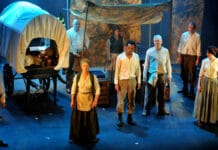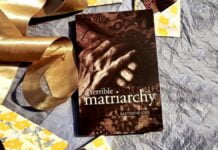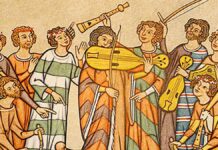Ballads, as stage performances, enjoyed the status of being one of the main sources of entertainment in ancient times. Legends and historical events were narrated in the form of ballads, which would comprise song and dance. Ballad was a perfect substitute for our current day technology-based entertainment, albeit with more emotional appeal. In the 18th century, ballad-based stage entertainment came to be known as “ballad opera.” According to ballad aficionados, the first formal ballad opera was staged in the first half of the 18th century, with the theme of “The Beggar’s Opera.”
Ballad, a short narrative folk song, whose distinctive style crystallized in Europe in the late Middle Ages and persists to the present day in communities where literacy, urban contacts, and mass media have little affected the habit of folk singing. The term ballad is also applied to any narrative composition suitable for singing.
France, Denmark, Germany, Russia, Greece, and Spain, as well as England and Scotland, possess impressive ballad collections. At least one-third of the 300 extant English and Scottish ballads have counterparts in one or several of this continental balladry, particularly those of Scandinavia. In no two language areas, however, are the formal characteristics of the ballad identical. For example, British and American ballads are invariably rhymed and strophic (i.e., divided into stanzas); the Russian ballads are known as byliny and almost all Balkan ballads are unrhymed and unstrophic; and, though the romances of Spain, as their ballads are called, and the Danish viser are alike in using assonance instead of rhyme, the Spanish ballads are generally unstrophic while the Danish are strophic, parcelled into either quatrains or couplets.
In reception, however, the ballad’s technique and form are often subordinated to its presentation of events – especially ones presented as historical, whether factually accurate or not – and their significance to the audience. The ballad also plays a critical role in the creation and maintenance of distinct national cultures. In contemporary literature and music, the ballad is primarily defined by its commitment to nostalgia, community histories, and romantic love.
Typically, the folk ballad tells a compact little story that begins eruptive at the moment when the narrative has turned decisively toward its catastrophe or resolution. Focusing on a single, climactic situation, the ballad leaves the inception of the conflict and the setting to be inferred or sketches them in hurriedly. Characterization is minimal, the characters revealing themselves in their actions or speeches; overt moral comment on the characters’ behaviour is suppressed and their motivation seldom explicitly detailed. Whatever description occurs in ballads is brief and conventional; transitions between scenes are abrupt and time shifts are only vaguely indicated; crucial events and emotions are conveyed in crisp, poignant dialogue. In short, the ballad method of narration is directed toward achieving a bold, sensational, dramatic effect with purposeful starkness and abruptness. But despite the rigid economy of ballad narratives, a repertory of rhetorical devices is employed for prolonging highly charged moments in the story and thus thickening the emotional atmosphere. In the most famous of such devices, incremental repetition, a phrase or stanza is repeated several times with a slight but significant substitution at the same critical point. Suspense accumulates with each substitution, until at last the final and revelatory substitution bursts the pattern, achieving a climax and with it a release of powerful tensions. The following stanza is a typical example:
Then out and came the thick, thick blood,
Then out and came the thin,
Then out and came the bonny heart’s blood,
Where all the life lay in.
Oral Transmission
Since ballads thrive among unlettered people and are freshly created from memory at each separate performance, they are subject to constant variation in both text and tune. Where tradition is healthy and not highly influenced by literary or other outside cultural influences, these variations keep the ballad alive by gradually bringing it into line with the style of life, beliefs, and emotional needs of the immediate folk audience. Ballad tradition, however, like all folk arts, is conservative, a trait that explains the references in several ballads to obsolete implements and customs, as well as the appearance of words and phrases that are so badly garbled as to indicate that the singer does not understand their meaning though he takes pleasure in their sound and respects their traditional right to a place in his version of the song. The new versions of ballads that arise as the result of cumulative variations are no less authentic than their antecedents. A poem is fixed in its final form when published, but the printed or taped record of a ballad is representative only of its appearance in one place, in one line of tradition, and at one moment in its protean history. The first record of a ballad is not its original form but merely its earliest recorded form, and the recording of a ballad does not inhibit tradition from varying it subsequently into other shapes, because tradition preserves by re-creating rather than by exact reproduction.
When people hear of ballads, they often immediately think of songs like the lovestruck melodies of famous performing artists such as the Righteous Brothers, Elvis Presley, Lonestar, Frank Sinatra, and Peter Gabriel. While they are partially correct, ballads can also be narrative pieces written in a poetic form.
Literary ballads are often written in the form of poetry, with some consisting of quatrains and others consisting of couplets.
- Tell a Story – They generally tell a story in a very direct manner, and they do not have to be about love at all.
- Use Imagery – Ballads often use vivid and expressive imagery in a detached manner to relay the tale.
- Put to Music – A prominent characteristic of ballads is that they can often easily be put to music.
They may eventually be set to music, or they remain in their original forms. However, in general, whether a ballad is a song or a story, it tends to have some sort of musical quality to it. One example of a ballad is Samuel Taylor Coleridge’s famous “The Rime of the Ancient Mariner.”
Ballads Written as Poetry
The following ballads are considered ballads in the poetic sense.
- “Ballad of the Gibbet” by Francois Villon
- “As You Came From The Holy Land” by Sir Walter Raleigh
- “The Second Coming” by William Butler Yeats
- “La Belle Dame Sans Merci” by John Keats
- “The Ballad of a Bachelor” by Ellis Parker Butler
- “Ballad on the American War” by Robert Burns
- “Ballad of the Army Cats” by Tu Fu
- “A Ballad Of The Trees And The Master” by Sidney Lanier
- “The Kirk of Scotland’s Alarm: A Ballad” by Robert Burns
- “A Ghost in the Night” by Nan Nichols
- “Summoned by the King” by William Kite
- “Ballad of the Cool Fountain” by Anonymous
- “The Broken-legg’d Man” by John Mackey Shaw
- “The Walrus and the Carpenter” by Lewis Carroll
- “The Ballad of Reading Gaol” by Oscar Wilde
- “Ballad of the Triangle Fire” by Ruth Rubin
- “Ballad of the Green Berets” by SSgt. Barry Sadler
- “Richard Cory” by Edwin Arlington Robinson
When we read through some of these ballad poems, we will find the main strand that ties them together: they all tend to tell a certain story.
Ballads Written as Songs
Of course, ballads are also songs, and these particular types of songs tend to be romantic, although they can portray other emotions as well.
- “Unchained Melody” by the Righteous Brothers
- “I Can’t Help Falling in Love With You” by Elvis Presley
- “God Must Have Spent A Little More Time On You” by Nsync
- “Candle in the Wind” by Elton John
- “Faithfully” by Journey
- “Hard to Say I’m Sorry” by Chicago
- “More Than A Feeling” by Boston
- “Bridge Over Troubled Water” by Simon and Garfunkel
- “Tears in Heaven” by Eric Clapton
Again, listening to or reading the lyrics of these songs will show us the common characteristics of love songs.
Ballads are important to look at because they show how the form has developed over time. A ballad is not simply a romantic song, although that definition will still apply in the field of music. Romance can be infused into ballads, especially if they are a narrative tale of love (or hate) as seen in the ballad by the anonymous Spanish poet. However, they are so much more as well. Anyone who knows the tale of “The Rime of the Ancient Mariner” knows how complex the story is in terms of theme, imagery, characters, symbolism, and many other literary devices and significations.




























